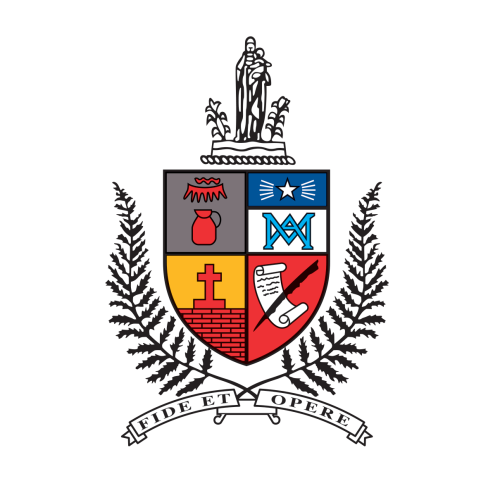
Reflections: The Life of St Bede
On Friday 27 May we celebrated the Feast of St Bede and took time to reflect on the life and history of the monk and scholar who gives the College its name.
Bishop Grimes chose St Bede as the patron of our College as he believed his scholarship and devotion would make him an excellent model for learning. He also believed that being an English saint, Bede would be more readily accepted in the staunchly Protestant province of Canterbury.
Today many may know St Bede for his translation of the Bible into English, but what else is known about his life?
Although a prolific writer, Bede wrote very little about his own life except for in the closing section of his greatest work Ecclesiastical History of the English People. What we do know is that he was born around AD672 in the north-east of England in the Wearmouth-Jarrow area, but nothing is known about his family or early life before entering the monastery at the age of seven.
Bede was committed to the Abbot Benedict at Wearmouth at just seven years old, this was a common practice for sons of prominent families of which Bede is thought to have been born. He was placed under the apprenticeship of Ceolfrith, a prominent scholar at the time, and followed him to Jarrow around 682. Four years later a plague swept through the monastery of which Bede and Ceolfrith are believed to be the only survivors.
Through his studies at the monastery Bede was educated in scripture, theology, sacred music, poetry and the Greek language. He was ordained a deacon at the age of 19, and after eleven years further study he was ordained into the priesthood at the age of 30.
As a priest Bede took on the responsibility of celebrating daily Mass for the members of his Benedictine community, as well as other works of monastery including farming and baking. He declined a request to become the abbot of his monastery instead choosing to focus on his scholarly works writing over 45 books in his lifetime. His works primarily focused on theology and the bible but also included topics such as history, science and literature. He became renowned as a teacher throughout Britain teaching hundreds of students through the monastery and its school.
Bede remained committed to the monastery and chose to remain close to it throughout his adult life. Very rarely did he leave. On the rare occasions he did venture beyond the monastery it was usually in search of books, having assembled nearly 500 books on the history of England and the Church, a considerable library for the time.
Bede was renowned during his lifetime as a historian and scholar. He is credited as being one of the first historians to popularize the use of the AD and BC dating method, and many notable figures of English society made pilgrimages to the monastery to seek his guidance.
It is perhaps well known that when he died in 735 he had just finished dictating the last chapter of his translation of the Gospel of St John. He died while at prayer only minutes later. In 1020 his remains were moved to Durham Cathedral, from which the College dormitory takes it name alongside Jarrow and Wearmouth in honour of St Bede. In 1899 he was declared a Doctor of the Church by Pope Leo XIII, a title given to saints who have made a significant contribution to theology or doctrine through their research and writing.
https://www.catholicnewsagency.com/saint/st-bede-the-venerable-466
